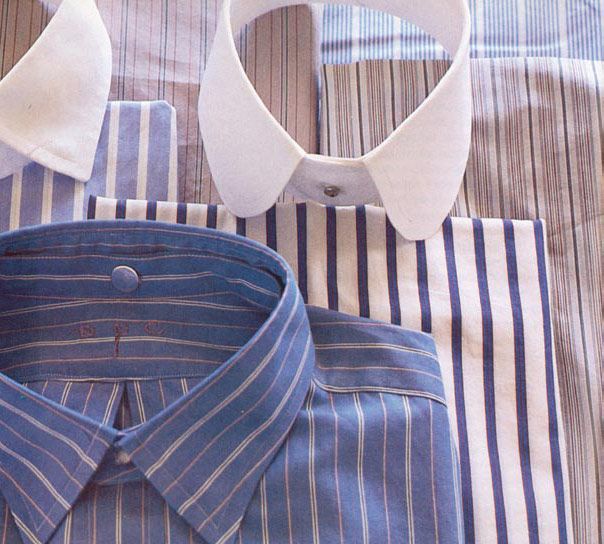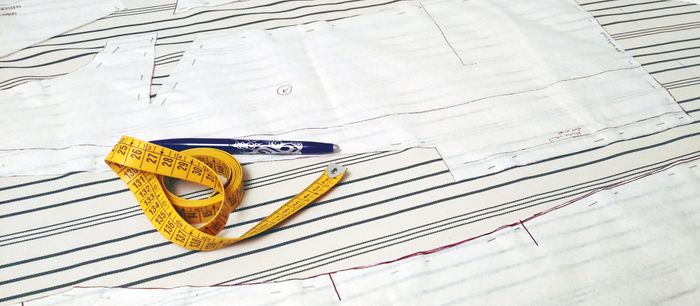How to Make a Shirt Stand Collar
Collar making procedures approaching the results achieved by elaborate manufacturing machinery
While investigating the construction of a fine quality shirt with a stand collar, I developed collar-making procedures that will enable the home sewer to approach the results achieved by the elaborate machinery of the manufacturer. Shirt stand collars, like the ones above, are most often found in men’s dress shirts, but they are also used on women’s shirts. A stand collar has a stand area, or collar band, separate from the collar area. The stand gives the collar its height. A fine quality shirt has certain hallmarks. The collar is shaped so it curves around the neck without puckering. The edge seams are hidden under the edge of the collar, which rolls naturally at the roll line. The two collar points are exactly the same shape and length.
My objectives were to build shape or curve into the collar and its stand, to increase the accuracy of the sewing in order to ensure a perfectly symmetrical and precisely sized collar, and to keep seam bulk to a minimum. These concerns grew out of the unsatisfactory results I got when I followed pattern instructions or general sewing texts. After explaining the general techniques, I’ll incorporate them into step-by-step instructions for making a stand collar.
The first technique I use is what I call taut sewing, required for many of the top-stitching and construction steps in a collar. Taut sewing eliminates the common problem of additional length being eased into the bottom fabric layer by the action of the feed dogs, and it generally eliminates seam pucker. The technique, shown in the photo at near right, is to pull the layers of fabric equally and in opposite directions, from in front of, and behind, the needle while you’re sewing, letting the feed dogs move the fabric under the presser…
Start your 14-day FREE trial to access this story.
Start your FREE trial today and get instant access to this article plus access to all Threads Insider content.
Start Your Free TrialAlready an Insider? Log in





Log in or become a member to post a comment.
Sign up Log in